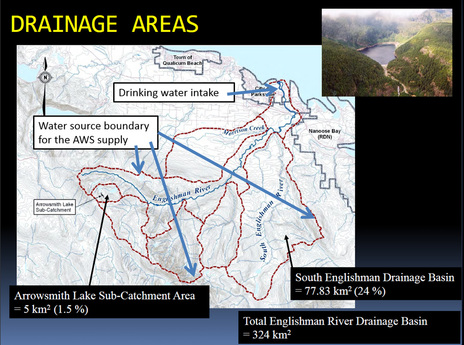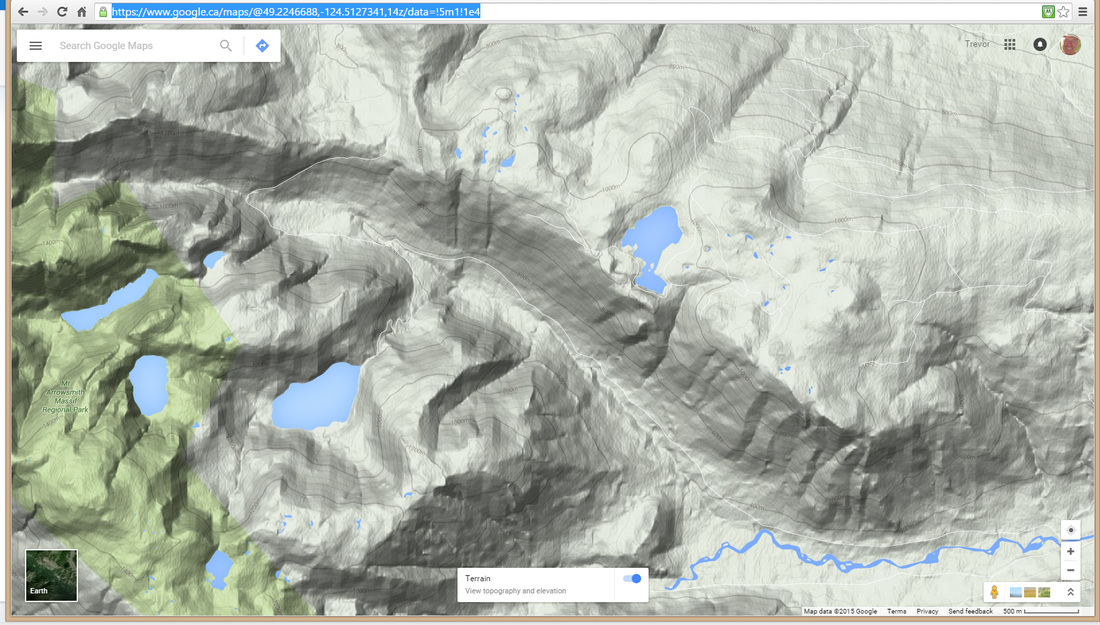Arrowsmith Lake
|
The water catchment area for the lake is only 1.5% of the total Englishman River Watershed
The Arrowsmith Water Service (AWS) have been granted a water licence to store up to 9.0 million cubic meters at Arrowsmith Lake to support municipal water demand and to maintain conservation flows to support fish habitat in the Englishman River through the dry summer period (typically from June to October). Approximately 50% of the total volume is provided to maintain conservation flows in the Englishman River.

To see an interactive topographical map of the area
Click on the drip or the map below to see the terrain in 3D.https://www.google.ca/maps/@49.2246688,-124.5127341,14z/data=!5m1!1e4 |
The picture above was taken in September 2015, and shows Arrowsmith Lake located in the headwaters of the Englishman River on the east facing slopes of Mount Arrowsmith about 25 km upstream of the mouth of the Englishman River. Arrowsmith Lake has a surface area of about 30 hectares and a watershed catchment area about 5 square kilometers. This is very small compared to the total watershed area of the Englishman River which is 324 square kilometers.
The lake retains 9 million cubic meters of water behind a dam that was built in the late 1990s. Water from the lake is released into the Englishman River and flows downstream where some of the water is extracted for domestic use. The current extraction point is just upstream of the estuary in Parksville. Please note the dam lower right, low water level, logging that has occurred since 2009, what looks like a floating mass of wood at the far end, a plume of what appears to be turbidity above the dam and no snow.This small watershed and lake is the main source of water for a rapidly growing population.
The total population of the area to be serviced by water from the lake was 17,550 in 2013 with population forecast to increase to 24,290 by 2035. The lake does help to provide extra water for the Englishman River in the summer dry period. However,the water has deteriorated, by the time it has drained to the lower reaches of the river at the proposed intake. Large numbers of people swim and bathe, high nutrient loads from septic disposal, agriculture and silviculture cause extensive blooms of possible toxic algae.The fish that spawn and die off upstream of top bridge also risk contaminating the extracted drinking water. |

